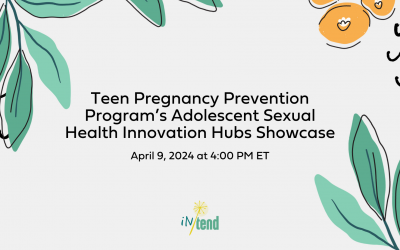
Alison Machlin is sharing the use of enthuasiatic content in sex education, specifically, what it means to give and get consent for sexual activity.

By Alison Macklin
February 11, 2019
We all want people to have consensual and pleasurable sex. Of course, not everyone agrees when and how that should be taking place for teens and youth, in general. Some people may add various qualifiers based on their personal values like, “when they are older” or “once they have found someone to be monogamous with.” But, regardless of personal beliefs, we should agree on this basic fact: that, first and foremost, sex must be consensual. And that the people engaged in the sexual activity should also be willing and enthusiastic participants in order to have the most positive and pleasurable experience possible for everyone involved.
So much of sex education focuses solely on reproductive anatomy, contraception, STI prevention…the less complicated and less controversial, fact-based approach. Those aspects of sex education are absolutely important, but in today’s age of highly accessible information, that type of information can be found easily through a quick internet search. (And, let’s face it, the young people of today are becoming extremely savvy at finding accurate and reliable information about sex despite all the genuinely bad information out there…) Instead, we need to ensure that the foundation of sex education is rooted in helping young people know, explicitly, what it means to give and get consent for sexual activity.
If a person is taught what enthusiastic consent looks like and sounds like, they are given the tools to identify when they want to participate in a sexual activity and are able to communicate that to a partner. A partner is then able to hear those messages and engage in a dialogue about sexual activity. Not just, “Do you have a condom?” but, “I think I am ready to have sex, what about you?” and/or “How do you like to be touched? Does this feel good?” Helping young people understand that this type of dialogue not only facilitates a positive relationship built on mutual respect, but it also focuses on the mutual benefits of sex and intimacy.
A good sex education grounded in enthusiastic consent gives young people the skills and desire to engage in healthy sexual relationships.
Of course, young people still do need to understand the risks of sexual activity and learn how to mitigate those risks. But we need to stop framing sex education as a means to stop unplanned pregnancies and transmission of STIs. A good sex education grounded in enthusiastic consent gives young people the skills and desire to engage in healthy sexual relationships. From a social-emotional perspective, arming young people with the communication and decision-making skills necessary to respectfully navigate sexual activity provides them with a foundation to live emotionally healthy sex lives, whatever that looks like for them. A sex life that is free of shame and stigma and supports a young person’s goals in life.
A good example of a country that values enthusiastic consent and has it as the backbone for its sex education curriculum? Sweden. According to the Guttmacher Institute, the adolescent birth rate for women under twenty years old in the United States is 22%, while the rate in Sweden is 4%.1 Furthermore, only 2.4% of the entire population of Sweden reports being exposed to sex offenses in 2016. In the US? Nearly 3% of men have experienced rape or attempted rape.2 Sure, Sweden also has better access to free contraception and health care when compared to the US, but it is undeniable that implementing sex education that ensures young people gain the skills necessary to navigate healthy relationships and engage in pleasurable and consensual sex provides a foundation for healthy sexual activity overall. And maybe, just maybe it can set the foundation for destigmatizing all aspects of human sexuality.
1 “Differences in Teenage Pregnancy Rates Among Five Developed Countries: The Roles of Sexual Activity and Contraceptive Use.” Guttmacher Institute. December 06, 2016. Accessed December 27, 2018. https://www.guttmacher.org/journals/psrh/2001/11/differences-teenage-pregnancy-rates-among-five-developed-countries-roles.
2 RAINN | The Nation’s Largest Anti-sexual Violence Organization. Accessed December 27, 2018. https://www.rainn.org/statistics/victims-sexual-violence.
Alison Macklin is the author of Making Sense of “It”: A Guide to Sex for Teens (and Their Parents, Too!) published by Viva Editions. Alison is an award-winning, nationally recognized leader in the field of comprehensive sex education and holds a Master’s in Social Work from the University of Denver. She is currently the Vice President of Education and Innovation at Planned Parenthood of the Rocky Mountains.










